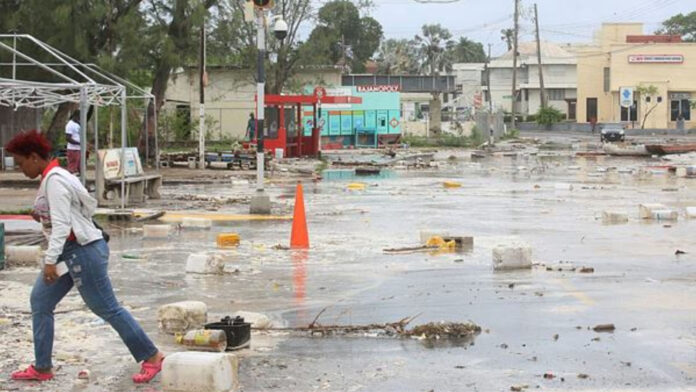Kingston, July 2
Hurricane Beryl’s powerful winds intensified as the strong category 4 storm moved across the southeastern Caribbean on Monday, putting Jamaica near its path after downing power lines and flooding streets on other Caribbean islands. Beryl was packing winds of up to 155 mph (250 kmh) as of 2400 GMT on Monday, the US National Hurricane Center (NHC) said, after striking the Caribbean region as the earliest Category 4 storm on record using the Saffir-Simpson five-point scale.
The hurricane is expected to dump 3-6 inches (8-15 cm) of rain across Barbados and the Windward Islands on Monday night, with some areas seeing as much as 10 inches, especially in the Grenadines and Grenada, the NHC said. Moving west-northwest at a speed of 21 mph, Beryl is expected to pass near Jamaica on Wednesday, the Miami-based hurricane center said.Jamaica’s government issued a hurricane warning for the country, while tropical storm warnings were in effect for parts of the southern coasts of the Dominican Republic and Haiti.”Beryl is expected to remain an extremely dangerous major hurricane as its moves over the eastern Caribbean,” the NHC said, adding that “rainfall may cause flash flooding in vulnerable areas.
At the Chillin’ restaurant in Kingston, waiter Welton Anderson said he felt calm despite the hurricane’s approach.”Jamaicans wait until the last minute. The night before or in the morning the panic sets in. It’s because we’re used to this,” he said. Across other islands in the eastern Caribbean, residents had boarded up windows, stocked up on food and filled their cars with fuel as th storm drew closer.Earlier Monday, vehicles were seen driving through a flooded boardwalk in Bridgetown, Barbados. In the St. Vincent community of Prospect, damage reports included roofs ripped off of buildings, as well as power cuts in other parts of the island. A Reuters reporter on Grenada said power was down acros the island. Officials in Mexico began to prepare for Beryl’s arrival later this week, with the federal government issuing a statement urging authorities and the population to exercise “extreme caution.”Mexico is currently assessing damages left by heavy rains from former tropical storm Chris, in the states of Oaxaca and Veracruz.”What worries us is that basins are already saturated. Then, with minimal rain…rivers will rise,” said Cutberto Ruiz, chief of meteorology at Oaxaca’s civil protection agency.
Beryl marks an unusually fierce and early start to this year’s Atlantic hurricane season, with scientists arguing that climate change likely added to how quickly the unusually fierce, early storm formed.
Global warming has helped push temperatures in the North Atlantic to all-time highs, causing more surface water to evaporate, which in turn provides additional fuel for more intense hurricanes with higher wind speeds.
Scientists surveyed by Reuters see the powerful hurricane as a harbinger of an unusually active hurricane season made possible by record-high temperatures in the tlantic Ocean. “Climate change is loading the dice for more intense hurricanes to form,” said Christopher Rozoff, an atmospheric scientist at the United States’ National Center for Atmospheric Research in Boulder, Colorado. Andra Garner, a New Jersey-based meteorologist, noted that Beryl jumped from a Category 1 to a Category 4 storm in less than 10 hours.Scientists have already predicted that events like Beryl will grow more likely with climate change, meteorologist Garner said. Her research has shown that as water temperatures rose over the last five decades, it has become more than twice as likely for storms to jump from weak storms to major hurricanes in less than 24 hours.”The eastern side of the island got the most battering and the seas remain dangerous. Fisherfolk got sufficient warning and were able to remove their boats from the water,” said Curtis Douglas, President of the All Tobago Fisherfolk Association.Only limited damage to hotel properties on the island has been reported so far, according to a local hotel and tourism group.In May, the US National Oceanic and Atmospheric Administration predicted above-normal hurricane activity in the Atlantic this year, also pointing to unseasonably high ocean temperatures.
Home News International ‘Extremely dangerous’ Hurricane Berylintensifies in Caribbean, eyeing Jamaica



























